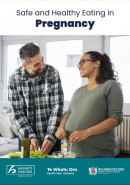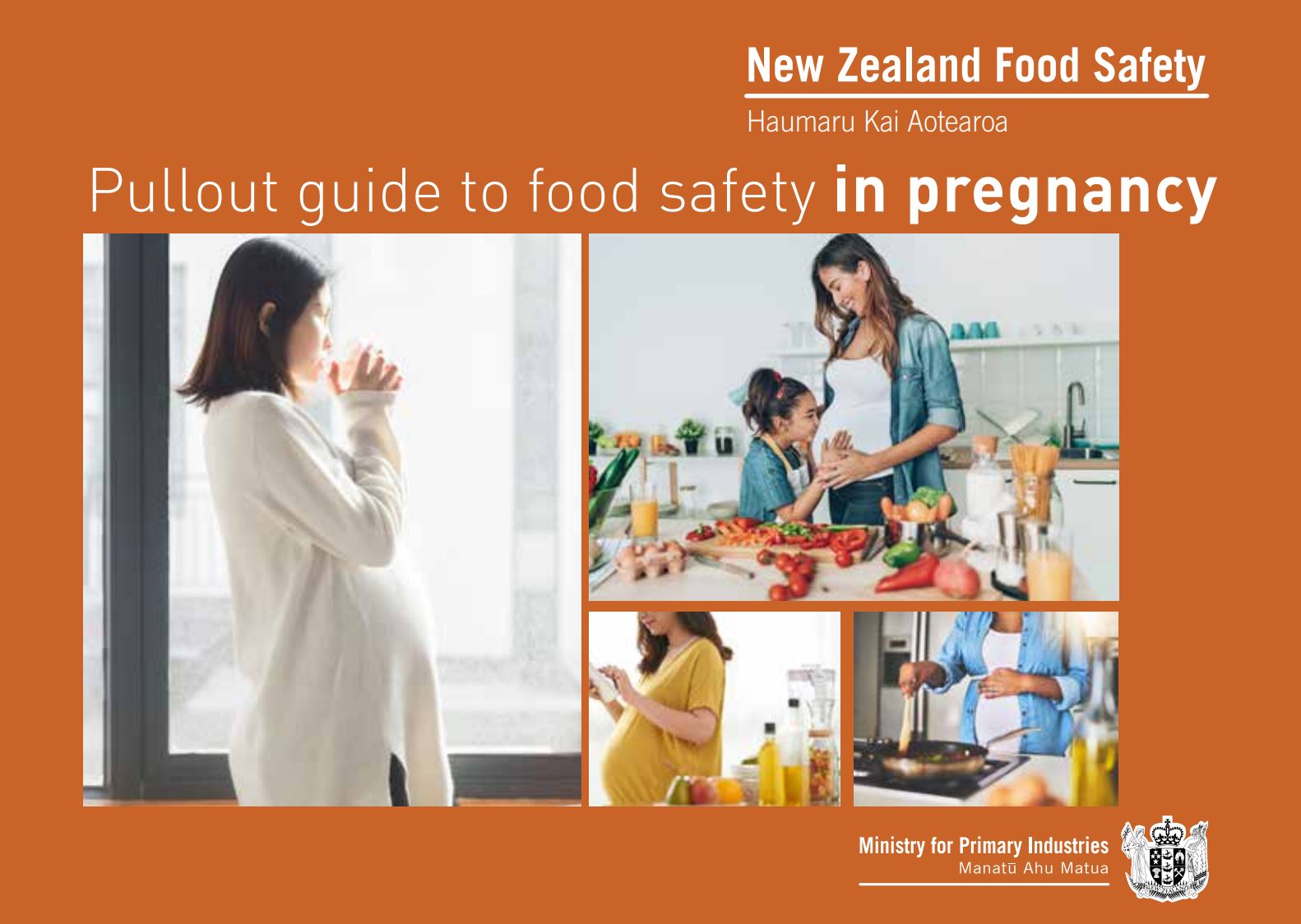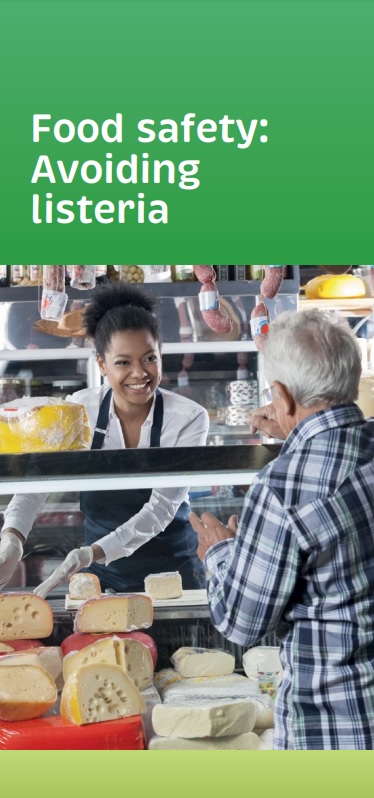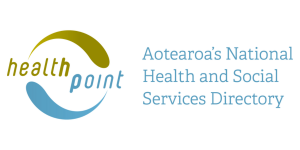Listeria bacteria are widely found in dust, soil, water, plants, sewage and animal droppings. They have also been found in a variety of foods, including raw meat, raw vegetables and some processed foods due to contamination.
Listeria infection is commonly transmitted to humans by eating contaminated food. The bug has been found in a variety of foods at all stages of preparation, from raw to well-cooked leftovers. Listeria is also able to grow on food that is stored in a fridge.
Low or no data? Visit zero.govt.nz, scroll down the page then click on our logo to return to our site and browse for free.
Listeria
Also known as listeriosis
Key points about listeria
- Listeria is a common bacteria found in dust, soil, water, plants, sewage and animal droppings. Listeria infection is commonly transmitted to humans by eating contaminated food.
- Foods most likely to be contaminated include ready-to-eat refrigerated meals and processed foods, eg, cooked and chilled meals, soft cheeses, cold meats, pâtés and smoked fish.
- It's particularly dangerous for pregnant women and can cause miscarriage, premature labour or stillbirth, or infection in the baby.
- Healthy people often have no symptoms but it can be serious for some people.
- Symptoms include fever, headache, tiredness, aches and pains and vomiting and diarrhoea and may take some time to appear after eating contaminated food.

People who are at particular risk of serious infection include pregnant women, older people and people with weakened immunity.
- Pregnant women: Pregnant women are 10–20 times more likely to get listeria infection than the general population. Even a mild infection in a pregnant woman can cause miscarriage, stillbirth, premature birth or a baby who is very ill when born. Listeria can be passed from mother to baby during pregnancy or birth. Read more about listeria and pregnancy.
- People with weakened immunity: This includes people with cancer, leukaemia, diabetes, AIDS, liver disease and kidney disease. Also anyone on medication that lowers the immune system, such as prednisone or cortisone, is also at risk.
Listeria infection can affect people differently. Healthy people usually develop few or no symptoms. However, for some people, the infection can be serious enough to require hospitalisation and may be a threat to life.
Symptoms may include fever, headache, tiredness, aches and pains, which may be accompanied by runny poos (diarrhoea), feeling sick (nausea) and stomach cramps. After eating contaminated food, on average, symptoms appear after about 3 weeks but can occur from 3 to 70 days.
Sometimes, it is not possible to identify which food caused a person’s illness because it can take so long for symptoms to appear after eating contaminated food. Infected individuals can excrete the bacteria in their poos for several months.
Pregnant women
Many pregnant women do not have any symptoms, or may just experience fever and other flu-like symptoms. Even if you do not feel sick, you can pass the infection to your baby. There is also a risk of stillbirth, miscarriage or premature birth. Read more about listeria and pregnancy.
Newborn babies
Infected newborn babies may show signs of infection at birth or during the first few days of life. Infection in newborn babies can be very severe and can include lung infection (pneumonia) and meningitis. Infected babies may have severe difficulty with breathing and feeding.
Infection usually occurs after eating food contaminated with listeria germs. Foods most likely to be contaminated include ready-to-eat refrigerated meals and processed foods, eg, pre-prepared ready-to-eat cooked and chilled meals, soft cheeses, cold meats, pâtés and smoked fish.
It is impossible to tell from the appearance, taste or smell whether the food is contaminated with listeria. Listeria will still grow on food which is stored in a fridge.
Pregnant women
If you think you have eaten food contaminated with listeria or if you have any of the symptoms of listeria infection, contact your doctor straight away. Remember that it can take 2 months for symptoms to appear. You may need to take antibiotics to treat the infection and prevent your baby from becoming infected.
Diagnosis
If you have a fever and other symptoms of possible listeria infection, such as tiredness and muscle aches, within 2 months after eating a possibly contaminated food, you should seek medical care and tell the doctor about eating possibly contaminated food. They may decide to do further tests.
Treatment
Many healthy adults and children with mild illness only need treatment of the symptoms, eg, medicines to treat a high temperature (fever) or increased fluid intake if you have infection of the gut (gastroenteritis). More severe infection may require antibiotics.
People with severe symptoms will need to be treated in hospital. During pregnancy, prompt antibiotic treatment may help keep the infection from affecting the baby. Read more about listeria and pregnancy.
The best way to avoid listeria infection is to avoid high-risk foods and always handle food safely.
High-risk foods that should be avoided
- uncooked, smoked or ready-to-eat fish or seafood, including oysters, prawns, smoked ready-to-eat fish, sashimi or sushi
- paté, hummus and tahini-based dips and spreads
- cold pre-cooked chicken
- processed meats including ham and all other chilled pre-cooked meat products including chicken, salami and other fermented or dried sausages*
- pre-prepared, pre-packaged or stored salads (including fruit salads) and coleslaws
- raw (unpasteurised) milk and any food that contains unpasteurised milk*
- soft-serve ice creams
- soft, semi-soft or surface-ripened soft cheese (eg, brie, camembert, feta, ricotta, Roquefort).*
* Note that these foods are safe to eat if heated thoroughly to steaming hot (ie, above 72°C).
For a more complete list see: Food safety in pregnancy
Foods that are safe to eat
- Most foods which have been thoroughly cooked (until piping hot) and eaten straight away.
- Vegetables and fruit that have been well washed.
- All tinned foods.
- Breads and cereals (without added mock creams or custards).
- Dried food (fruit, nuts, lentils, beans etc).
- Pasteurised milk and milk products – yoghurt, cheese etc.
Safe ways to handle food at home
Safe food handling and safe storage of food is important for everyone.
- Wash your hands before preparing food, and between handling raw food and ready-to-eat foods.
- Wash raw fruit and vegetables well before eating.
- Cook all foods of animal origin, including eggs, thoroughly.
- Cook leftover foods or ready-to-eat foods, such as hot dogs, until steaming hot before eating.
- Keep uncooked meats separate from vegetables, cooked foods and ready-to-eat foods.
- Uncooked meats should also be well wrapped or covered.
- Wash hands, knives and cutting boards thoroughly with hot water and soap after handling uncooked foods.
- Take special care when using a microwave to heat food all the way through until it is piping hot.
The NZ Government Ministry of Primary Industries (MPI) in Food Safety (previously called the NZFSA) has a booklet Food safety in pregnancy and other useful resources available to download from the Food safety website(external link)
You can also talk to your doctor or midwife and contact the Public Health Units at your local Community Health Service.
Resources
Safe and healthy eating in pregnancy(external link) HealthEd, NZ, 2023
Pullout guide to food safety in pregnancy(external link) Ministry for Primary Industries, NZ, updated Sept 2020
Food safety – avoiding listeria(external link) Health Ed, NZ, 2017
References
- Listeria (Listeriosis)(external link) Centers for Disease Control US, 2019
- Listeriosis(external link) World Health Organization
Brochures

Safe and healthy eating in pregnancy
HealthEd, NZ, 2023

Ministry for Primary Industries, NZ, updated Sept 2020

Health Ed, NZ, 2017
Credits: Healthify editorial team. Healthify is brought to you by Health Navigator Charitable Trust.
Reviewed by: Dr Li-Wern Yim, Travel Doctor, Auckland
Last reviewed:
Page last updated:





